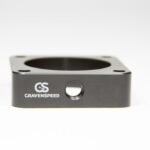Ever noticed a cryptic “EPC” indicator illuminating your dashboard and wondered if your vehicle was about to embark on an unscheduled vacation to the repair shop? What exactly is EPC on a car, and why does its sudden appearance often induce a minor state of vehicular anxiety? Understanding this seemingly innocuous acronym could be the difference between a quick fix and a more protracted, wallet-draining diagnostic odyssey.
EPC, in the automotive lexicon, stands for Electronic Power Control. It’s a warning system, primarily found in vehicles manufactured by Volkswagen Group (VW, Audi, Skoda, SEAT), but also appearing in certain other makes, designed to monitor and regulate various engine and transmission functions. Think of it as a sophisticated sentinel, constantly vigilant, ready to raise the alarm at the slightest sign of functional aberration. But unlike a general engine warning light that might indicate a wide range of issues, the EPC light specifically targets glitches within the electronic control systems governing engine power output and throttle response. Let’s delve into the common culprits behind this illuminated enigma.
Unraveling the Potential EPC Culprits: A Litany of Possibilities
The EPC light, while seemingly straightforward, can be triggered by a constellation of underlying issues. Navigating this diagnostic landscape requires a systematic approach. We’ll explore some of the most prevalent instigators:
1. Throttle Body Malfunctions: The Prime Suspect
The throttle body, the gatekeeper of airflow into the engine, plays a pivotal role in regulating engine speed and power. Any disruption in its operation can immediately trigger the EPC light. A dirty or malfunctioning throttle body might struggle to open and close correctly, leading to erratic idle, sluggish acceleration, or even complete engine stalling. Think of it as a sticky valve, impeding the smooth respiration of your engine. Carbon buildup is a frequent offender, gradually encroaching on the throttle plate’s movement. Electronic throttle position sensors, responsible for relaying the throttle plate’s angle to the engine control unit (ECU), can also fail, providing inaccurate data and throwing the entire system into disarray. Regular cleaning and occasional sensor replacement are often the prescribed remedy.
2. Brake Light Switch Anomalies: An Unexpected Twist
Surprisingly, a faulty brake light switch can also illuminate the EPC indicator. The ECU utilizes signals from the brake light switch for various functions, including cruise control deactivation and torque converter lockup. A malfunctioning switch can send spurious signals, confusing the ECU and triggering the EPC warning. Symptoms might include intermittent cruise control failure or unusual engine behavior during braking. The fix is typically a straightforward replacement of the brake light switch, a relatively inexpensive component.
3. Crankshaft and Camshaft Sensor Issues: Timing is Everything
Crankshaft and camshaft sensors are crucial for determining the engine’s precise timing. They provide the ECU with information about the position of the crankshaft and camshaft, allowing it to accurately control fuel injection and ignition timing. A failing or damaged sensor can disrupt this delicate synchronization, leading to poor engine performance, misfires, and, of course, the dreaded EPC light. These sensors are susceptible to heat and vibration, making them prone to failure over time. Diagnostic codes can pinpoint the problematic sensor, facilitating a targeted replacement.
4. Fuel Delivery Problems: Starving the Engine
Insufficient fuel delivery can also manifest as an EPC issue. A clogged fuel filter, a failing fuel pump, or faulty fuel injectors can all restrict the flow of fuel to the engine, leading to lean running conditions and reduced power. The ECU, detecting this anomaly, may trigger the EPC light as a protective measure. Diagnostic testing can assess fuel pressure and injector performance, identifying the root cause of the fuel delivery problem. Replacement of the faulty component is usually necessary.
5. Electronic Control Unit (ECU) Glitches: The Brain’s Hiccups
While less common, issues within the ECU itself can also trigger the EPC light. The ECU, the central processing unit of the engine management system, is responsible for interpreting sensor data and controlling various engine functions. Software glitches, corrupted data, or hardware failures within the ECU can lead to erroneous signals and system malfunctions. Diagnosing ECU problems often requires specialized equipment and expertise. In some cases, reprogramming or replacement of the ECU may be necessary.
6. Pedal Position Sensor Imbroglio
Modern vehicles often employ electronic accelerator pedals equipped with position sensors that translate pedal movement into electronic signals sent to the ECU. A faulty or miscalibrated pedal position sensor can disrupt this communication, causing erratic throttle response and triggering the EPC light. Recalibration or replacement of the sensor is often required to resolve the issue.
Navigating the EPC Diagnostic Maze: A Call to Action
When the EPC light illuminates, immediate action is paramount. While it might be tempting to ignore it and hope it disappears, doing so could potentially exacerbate the underlying problem and lead to more extensive damage. The first step is to consult your vehicle’s owner’s manual for specific guidance. However, the most prudent course of action is to seek professional diagnostic assistance from a qualified mechanic. They possess the necessary tools and expertise to accurately diagnose the root cause of the EPC light and recommend appropriate repairs. Attempting to diagnose the problem yourself without the proper knowledge and equipment can be risky and may even lead to further complications. Remember, early intervention can often prevent minor issues from escalating into major, costly repairs. Treat the EPC light as a serious warning sign, and your vehicle will thank you for it.









Leave a Comment